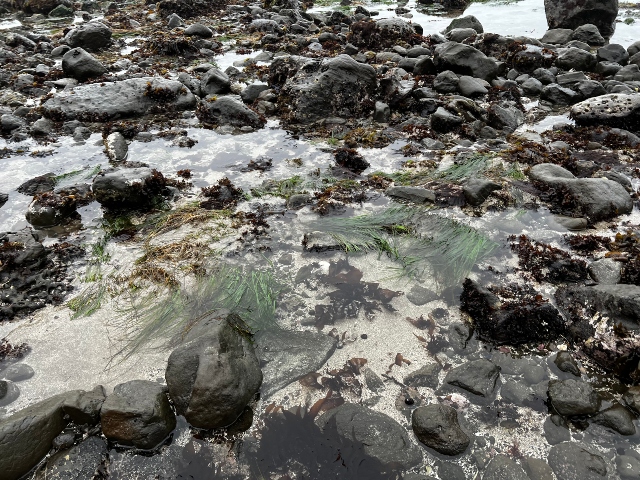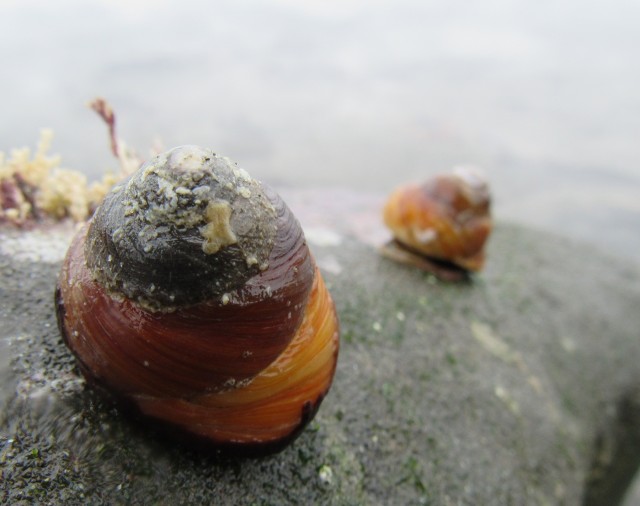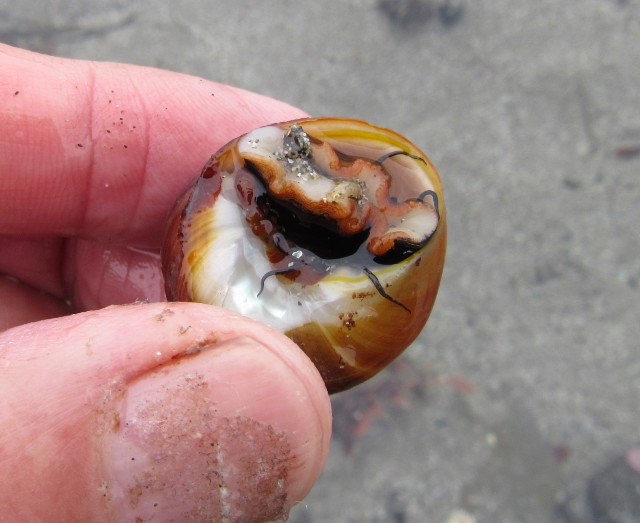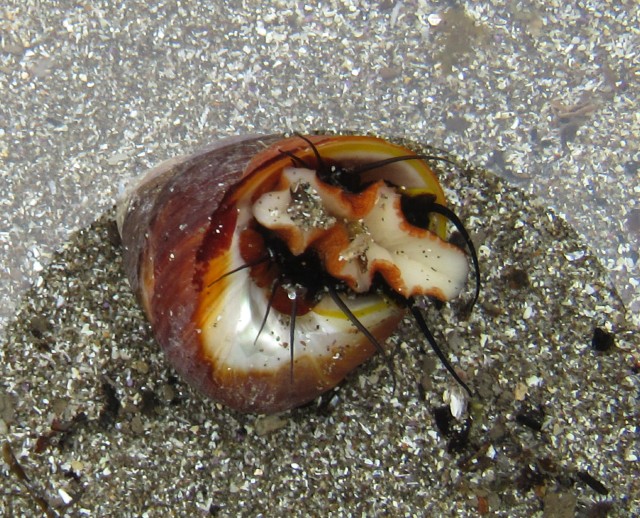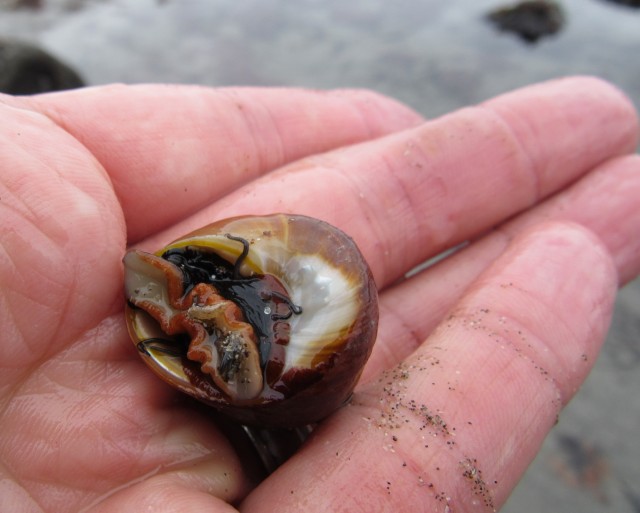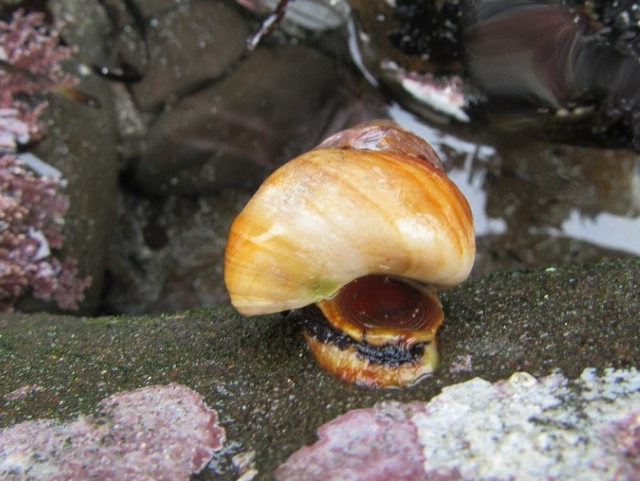While tidepooling on the California coast, I came across a few of these cool mollusks. This species occurs in the Pacific Ocean from Oregon to Santa Barbara Islands, California.
With its smooth, conical shell, a brown turban snail looks like a “foot” wearing a large hat. The shell, usually covered with red algae, is orange or bright brown.
This herbivore is common in the low intertidal and shallow subtidal areas, and is most commonly found on kelp, upon which it feeds. When an individual dies, the shell is often rapidly utilized by hermit crabs, which use the hard shells to protect their soft abdomen. If you see a brown turban shell rapidly moving across the reef, it is occupied by a hermit crab.
If a Brown Turban Snail is dislodged from an irregular rock bottom, it can readily right itself, but on a gravel bottom it uses pebbles as a tool. It picks up pebbles with the front of its foot and transfers them to the back part of its foot. This changes the snail’s center of gravity, enabling it to roll over and right itself.
Like other snails and slugs, to feed it uses a radula (belt-like organ with numerous teeth on it) to rasp away the surface layer of tissue on blades of kelp and other algae.
Italian chefs serve these snails cooked in oil and served in their shell. They are removed and eaten with a pin. Brown Turban Snails are important prey species for predators including Sea Otters, Octopuses, Rock Crabs, and Sea Stars. They are able to sense chemicals that are released from some predators and flee towards shore in response.

